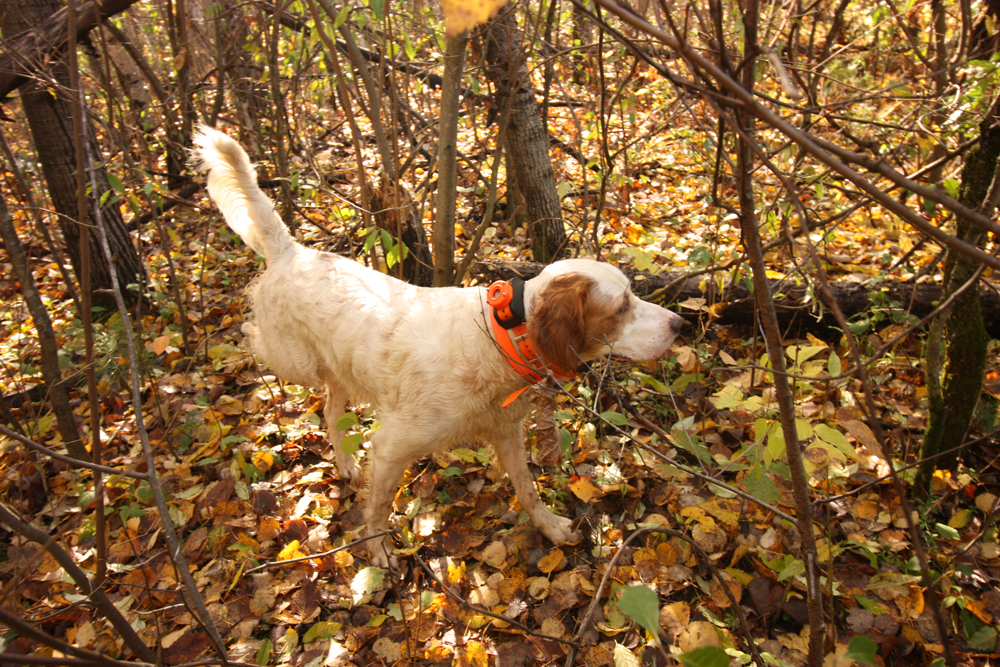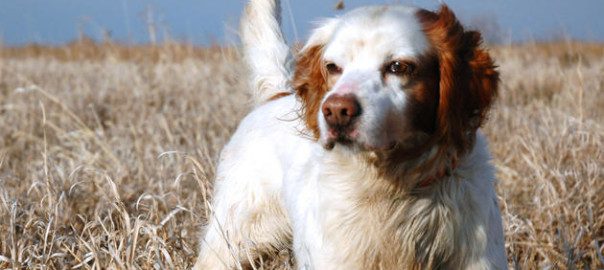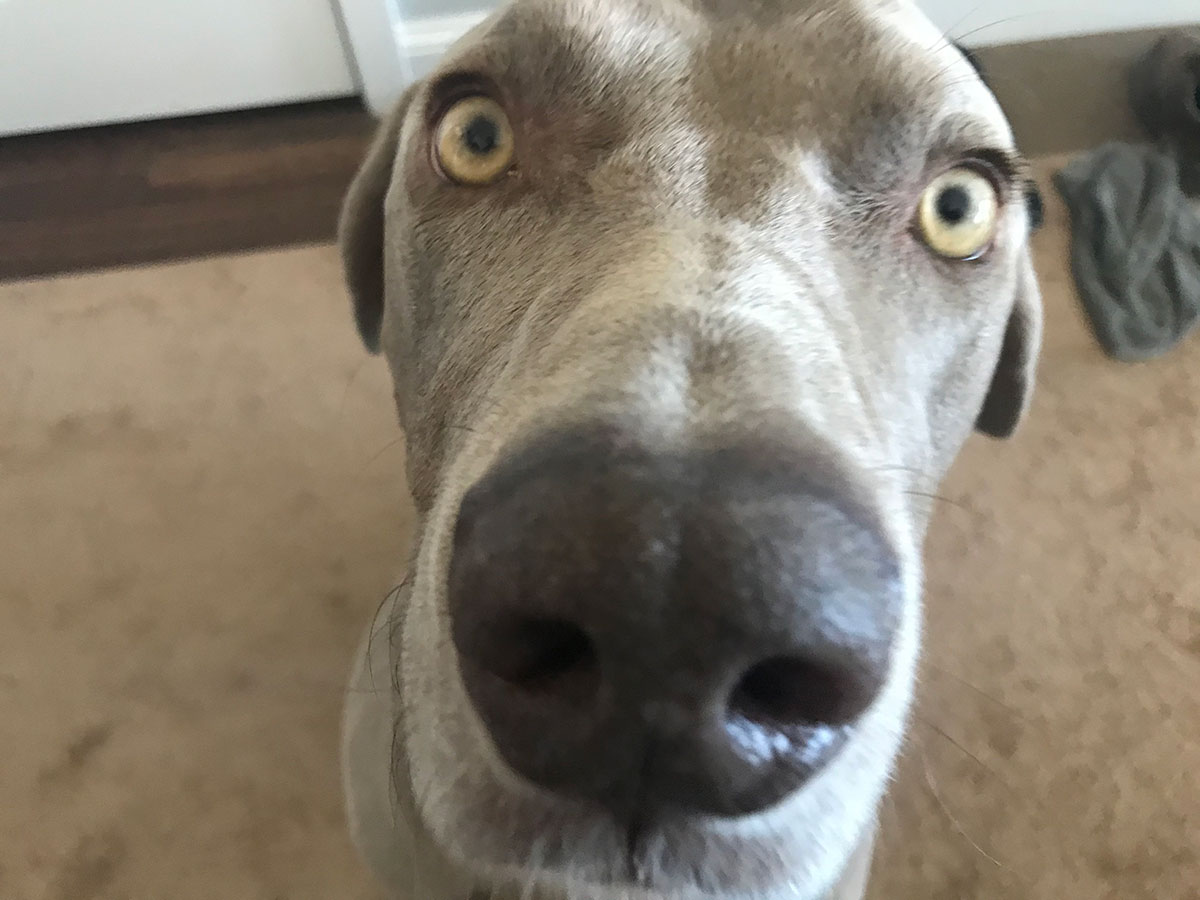A whimper, one ever so slight and resembling the noise made by an injured dog, came from two of the three dog boxes in the back of my truck. Normally I’d take heed, but I already knew the deal: I was belling up my wife’s 3-year-old male setter, Rebel, and the old gals in the other boxes were miffed.
The little boy was trembling with excitement and ready to go. He was full of speed, nose, and hunt, and at his age, he didn’t cotton much to staying in the box. The fact of the matter was he’d already run a few big covers. He’d cop a deep drink of water, pant a bit, and expect me to cut him loose for another run. The funny thing about young dogs with drive is that they don’t know the word “quit.” Kids and young adults are that way, too.
’Course, it was more than a while ago when my ladies were just like that. A few months ago Ocracoke turned 12. Last June Rowdy turned 11. And that makes me . . . ? Time didn’t pass me by, either. I suppose that every time I refer to the gals as “old ladies” I ought to call myself an “old man.” How’d it get to be that way, anyway?
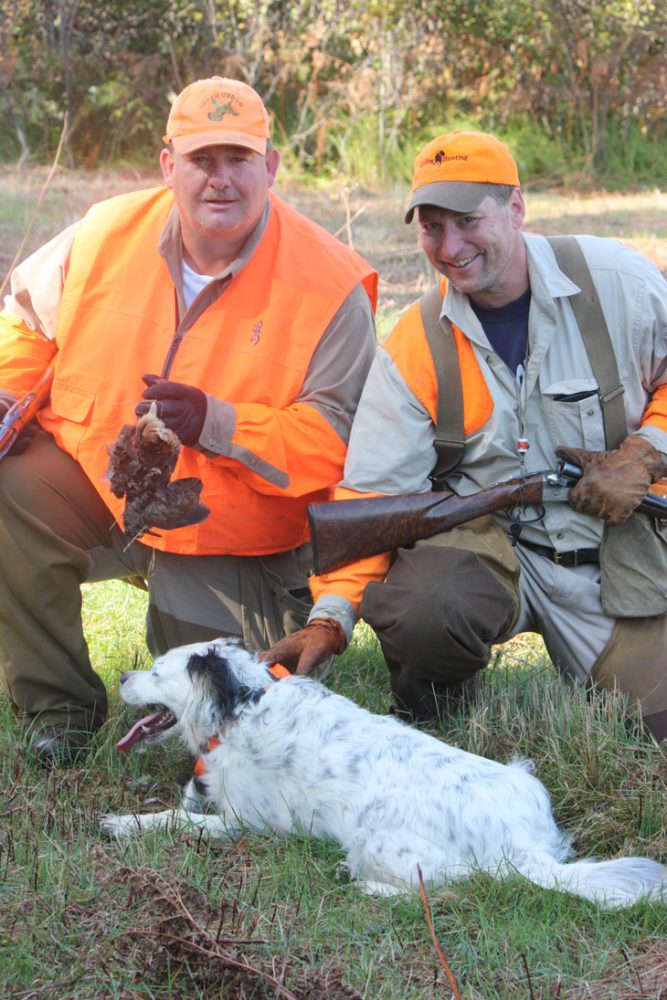
Ocracoke hunted as hard as she could to find a woodcock. Brett Silliker, left, made his shot count. The author enjoyed each of them’s company.
Since the odometer on my personal engine hit 50—and that was a few years ago now—I’ve been hearing lots of adages. Maybe I’ve heard them before and am just noticing them now, but “time marches on” and “time flies like an arrow” and “time waits for no man” ring true. But the numbers don’t make sense. When an outboard engine hits 50 hours, it’s just warmed up. My last truck ran 250,000 miles, which means when it rolled over 50,000 miles it was just broken in. I kinda like that. I’m not old. I’m just like my jeans, my boots, and my two ladies. We’re just warmed up and broken in.
Literature of the 1920s was among the first to celebrate the Cult of Youth. Young people were alive! They were exciting and exuberant, handsome and pretty, and colorful and spirited. Tradition be gone, for the Roaring ’20s ushered in a new era. What do old folks know, anyway?
Nothing. Until you’re one of ’em.
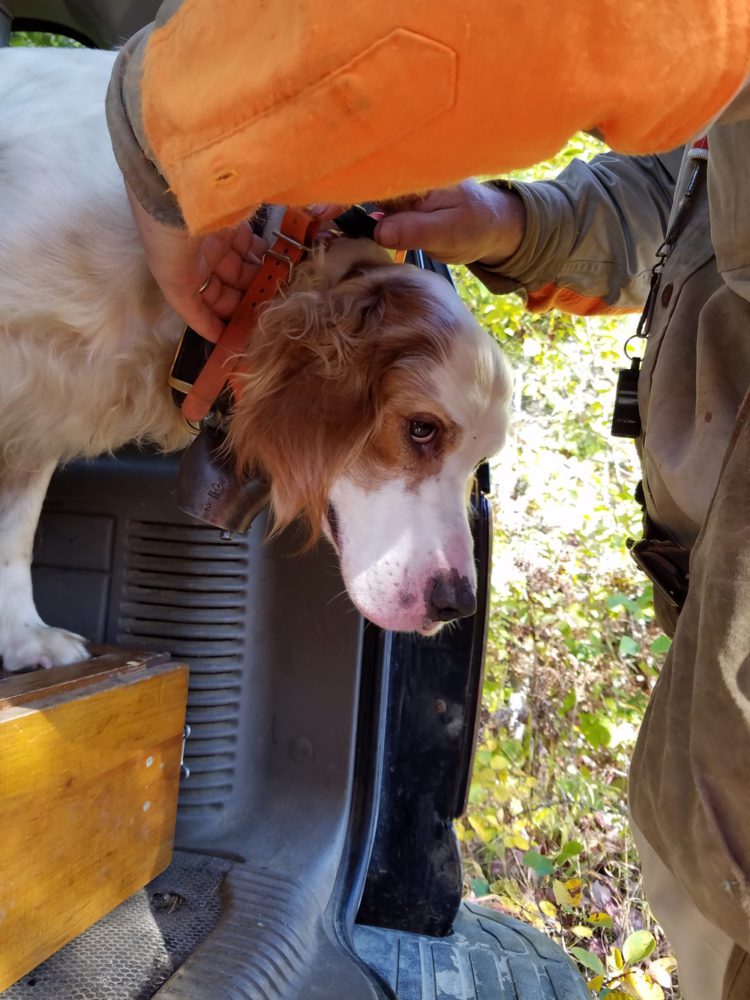
Soft whines from the old gals begin when the young man gets belled for a run.
Wind it back a bit and you’ll see that with age comes experience. From experience comes wisdom. From age comes wisdom. That’s more like it. Age doesn’t make things good or bad. It just makes ’em different.
My gals move more slowly than before, no doubt. Sometimes they plod through a cover like a draft horse pulling a wagon uphill. Maybe it’s their bodies that ache, or maybe a bout of arthritis is acting up. Sometimes they put both front paws on a log and pull their lagging hindquarters on up. Rather than bull their way through a thick cover, they look around more than normal and search for the gaps that allow for easy passage. I can relate. I do the same thing, too.
But just when you’re settling in to that new pace, a gust of scent-carrying wind changes their moods. Energy, spunk, speed, and dexterity returns. Suddenly that old dog is all drive, with enough moves to resemble a halfback inside the red zone. Mopey dogs cover perfectly with bright eyes and cracking tails, and they remind us of the time we fell in love with them. When they go on point, it’s best to drop that bird and put some feathers in their mouths. Every point counts with an old dog, as we never really know how many more they’ll have.
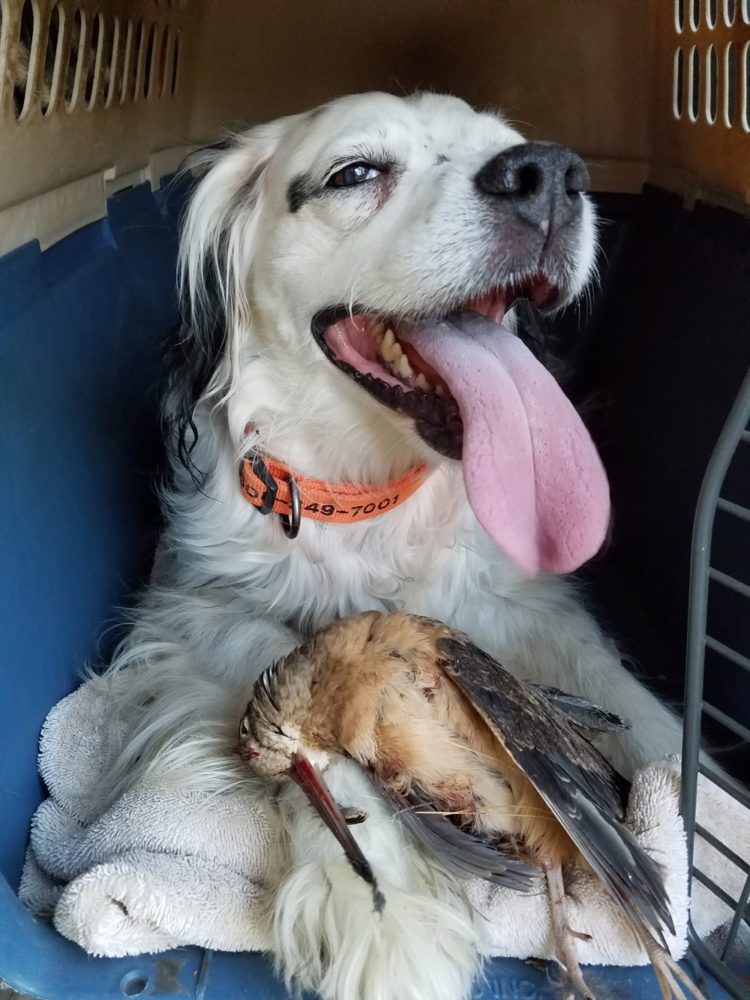
Older dogs are just as pleased with their birds as young dogs. Maybe more so.
As fast as their energy arrives, their stamina disappears. That’s to be expected, and it’s why I run them in smaller pocket-covers that almost always hold birds. The old gals like thinner flight covers full of goldenrod rimmed with an edge of poplar. They like loose white birch runs adjacent to a field sewn with winter rye. River bottoms close to a stream are a great way to cool ’em down. I feel no need to run their legs off; exercise is best served for a younger dog.
Older dogs are wiser; they have volumes of experience from which they draw. I swear they remember every part of a cover where they found birds in the past. They high-grade the cover and head right to the spots where they’ve found a grouse or a woodcock before. The shortest distance between two points is a straight line, and older dogs know how to be efficient.
Field trialers whole-heartedly disagree when I give my old dogs their due. They should. Field trialing is a competitive business, and trialers need to put down the dog that will give them the best chance of winning. But the ribbons I seek are much different than theirs. I want to relive their first points, their first birds, a double if that happened, and everything else along the way. I want to experience it over and over again and remember it so that I will never forget. Hunting with an old dog is like revisiting a favorite book or movie. I can’t wait to watch It’s a Wonderful Life again. I’ve only seen it several dozens of times before, and that’s not enough.
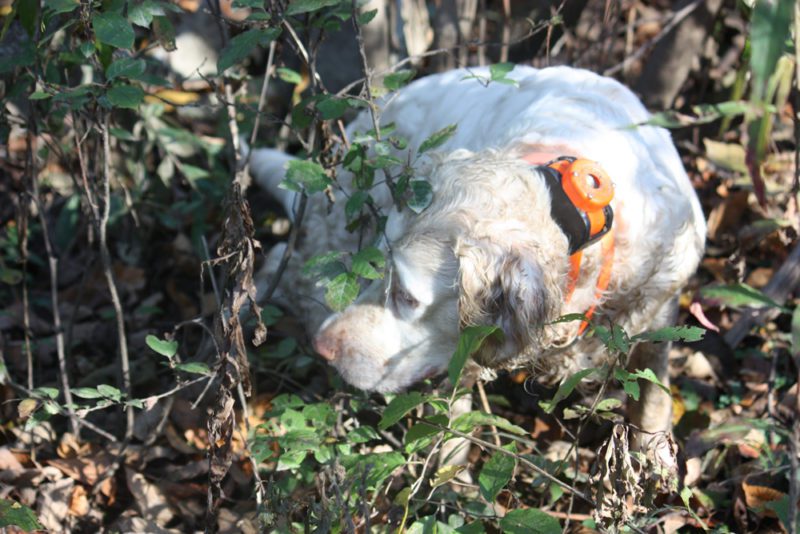
Sagging tails, low heads, and meat dog points can be normal when hunting with older dogs.
I hump at a good pace to keep up with young dogs, but with an old dog I slow down and match my speed to theirs. Along the way I overlook their mistakes, as I know they do mine. Truth be told, I still wince at occasional point thievery and get peeved when they hunt for themselves. Maybe some dogs have hard hearing, but maybe they hear just fine. Sometimes I believe the reason they wander off on their own is this: After devoting nearly a lifetime of hunts for me, they just want to hunt for themselves. Poor manners will always bother me, but with an older dog I just bite my lip. Sometimes I have to bite down pretty hard.
When I’m about as hacked off as I can be, they go on point. Their tails sag as their heads are low, and sometimes they crowd a bird. When an old dog nails a bird, all is forgotten, just as all is forgiven. No longer do I live in a past memory. I celebrate a new one. Tomorrow will come, but for today we are doing what we were both bred to do. We’re a team, for better and, on some days, for worse. But not now, not when an old dog is on point.
“How did it get so late so soon?” asked Doctor Seuss. Who cares? When my gals hear a bell pulled from the bag, their tails thump the kennel walls like a bass drum in a marching band. When it’s another dog’s turn to run, they press their noses up to the cage so hard that I think they are trying to squeeze their entire bodies through the bars. I can’t teach an old dog new tricks, but they sure as heck can teach me a thing or two.
Tom Keer is one of Sporting Classics’ senior editors. Be sure to subscribe to the print magazine for his column and features.
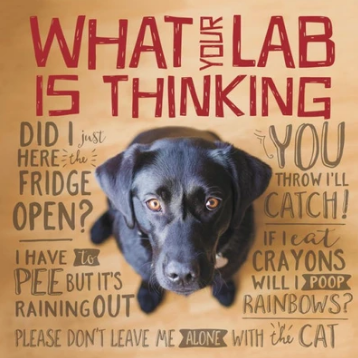 Labs are known for their furry snuggles, playful romping and soulful eyes; just think if they’re tongues were wagging instead of their tails! This playful little book is full of side-splitting inner monologues about a lab’s favorite things, the people they meet and places they go. The bold colors and lighthearted quips are paired with an array of adorable yellow, black and chocolate dogs and puppies, making this the perfect gift book for anyone who’s ever loved a lab. Buy Now
Labs are known for their furry snuggles, playful romping and soulful eyes; just think if they’re tongues were wagging instead of their tails! This playful little book is full of side-splitting inner monologues about a lab’s favorite things, the people they meet and places they go. The bold colors and lighthearted quips are paired with an array of adorable yellow, black and chocolate dogs and puppies, making this the perfect gift book for anyone who’s ever loved a lab. Buy Now

